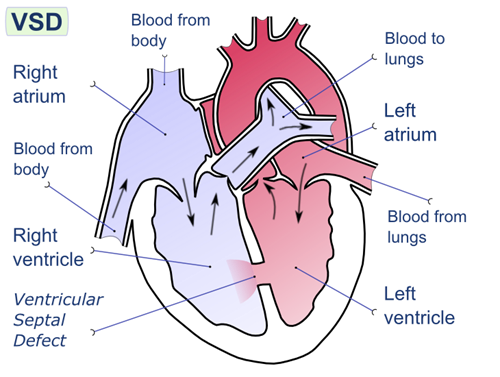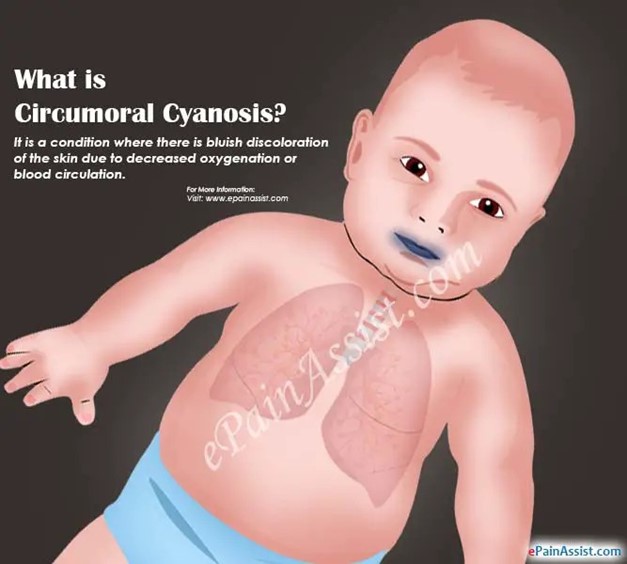The practical nurse (PN) is feeding a 2-month-old male infant with heart failure due to a ventricular septal defect (VSD). Which intervention should the PN implement?
Weigh before and after feeding.
Allow the infant to rest before feeding.
Feed the infant when he cries.
Insert a nasogastric feeding tube.
The Correct Answer is B
In infants with heart failure, they may have difficulty feeding due to fatigue and increased work of breathing. Allowing the infant to rest before feeding helps conserve their energy and reduces the risk of excessive fatigue during feeding.

The other options are not appropriate interventions for this situation:
A. Weigh before and after feeding: Weighing before and after feeding is not necessary in this case unless specifically ordered by the healthcare provider. It is not directly related to the management of feeding an infant with heart failure.
C. Feed the infant when he cries: Feeding the infant solely based on crying may not be appropriate in this case. It is important to establish a feeding schedule and monitor the infant's signs of hunger and satiety to ensure adequate nutrition and prevent overfeeding.
D. Insert a nasogastric feeding tube: Inserting a nasogastric feeding tube should not be the first intervention unless there is a specific indication or order from the healthcare provider. In this scenario, the focus is on supporting oral feeding and allowing the infant to rest before feeding.
Nursing Test Bank
Naxlex Comprehensive Predictor Exams
Related Questions
Correct Answer is C
Explanation
The best action for the practical nurse (PN) to assist the client in dealing with his pain would be to guide the client through slow, rhythmic breathing.
Guiding the client through slow, rhythmic breathing techniques can help promote relaxation and reduce anxiety, which can indirectly contribute to pain relief. Deep breathing exercises can help the client focus on their breath and divert attention away from the pain, providing some relief and helping them cope with the discomfort. It is a non-pharmacological intervention that can be implemented immediately to help the client manage their pain.
The other options are less effective or not appropriate in this situation:
A. Dimming the lights in the room and closing the door may create a more calming environment, but it does not directly address the client's pain or provide them with effective pain relief.
B. Turning the television on to the client's favorite show may serve as a distraction, but it may not be sufficient to alleviate the client's pain.
D. Obtaining a prescription for a higher dose of pain medication should only be considered after evaluating the client's current pain management regimen and assessing their response to the current medication. It is not the immediate best action to take without further assessment and consideration of other non-pharmacological interventions.
Correct Answer is C
Explanation
Circumoral cyanosis, which is bluish discoloration around the mouth, can be a sign of inadequate oxygenation. It suggests that there may be an issue with the infant's respiratory or cardiovascular system, potentially indicating respiratory distress or a cardiac problem. Prompt assessment and intervention are necessary to determine the cause of the cyanosis and ensure the infant's well-being.

A. The six-hour-old infant with a large sacral "stork bite" refers to a common birthmark caused by dilated blood vessels. While it may be important to assess the birthmark and document its presence, it is not an urgent concern requiring immediate attention.
B. The two-day-old infant with a negative Ortolani's sign refers to a specific maneuver used to assess for developmental hip dysplasia or dislocation. A negative Ortolani sign indicates that there is no evidence of hip dislocation. While it is important to assess the infant's hips and document the findings, it does not require immediate attention.
D. The one-day-old infant with a positive Babinski's reflex refers to an abnormal response in which the infant's toes fan out and the big toe dorsiflexes when the sole of the foot is stimulated. While a positive Babinski's reflex can be a normal finding in infants under a certain age, it is important to assess the infant's neurological status. However, it does not require immediate attention compared to the infant with circumoral cyanosis, which indicates potential respiratory or cardiovascular distress.
Whether you are a student looking to ace your exams or a practicing nurse seeking to enhance your expertise , our nursing education contents will empower you with the confidence and competence to make a difference in the lives of patients and become a respected leader in the healthcare field.
Visit Naxlex, invest in your future and unlock endless possibilities with our unparalleled nursing education contents today
Report Wrong Answer on the Current Question
Do you disagree with the answer? If yes, what is your expected answer? Explain.
Kindly be descriptive with the issue you are facing.
